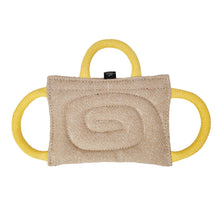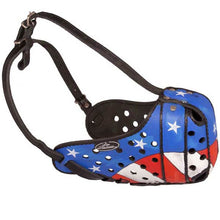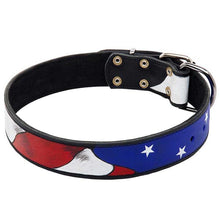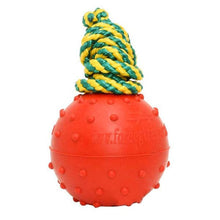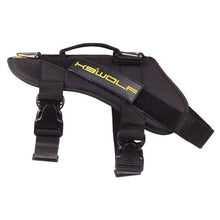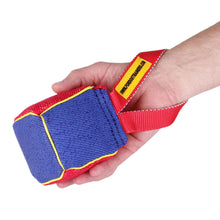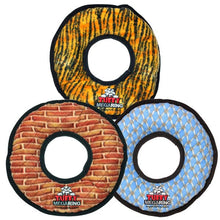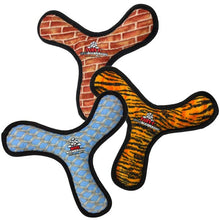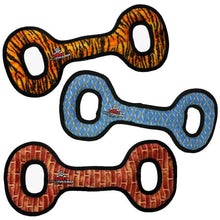Understanding Your German Shepherd Puppy's Energy Levels: When Can You Expect Them to Calm Down?

German shepherd dogs are an active breed. If you live with one, you know what we mean. As working dogs, they are high energy and have lots of brain power, too. They’re definitely a breed that will keep you on your toes.
If you’re wondering at what age they begin to slow down, you might be surprised to learn that as long as they’re in good physical condition, they will stay active until they are 7 – 8 years old. And even then, as long as they have the ability, they still love to have fun and play well into their senior years.

Since German shepherds were bred to work all day, they have lots of stamina. Built for herding and guarding livestock, they have plenty of energy to burn. Since your pet probably doesn’t have a real job, it’s up to you to help them expend their pent-up energy.
German shepherds that don’t get enough exercise and/or mental stimulation in a day will let you know. They’ll act hyper indoors, demand attention, beg to be taken out, can get naughty, and find plenty of ways to get noticed.
It’s also important to know that dogs that don’t get enough regular exercise will develop behavior problems. They can easily get destructive, frustrated, develop anxieties, and even get depressed. Bored German shepherds are unfulfilled, unhappy dogs.

The age a German shepherd begins to slow down is unique to the individual dog. But as a rule of thumb, adult dogs need at least 1 – 2 hours a day of exercise and that’s not negotiable. The energy level expended in these sessions will lessen as the dog ages, their physical condition declines, or they develop orthopedic problems, etc.
By the time a German shepherd reaches 8 – 10 years old, they are usually content to play, roam around the yard, go for a short walk, enjoy the outdoors, or go for a car ride. But again, this depends on the dog’s personality, drive, and overall health.
How To Calm Down Your Puppy
Exercise
When German shepherds are puppies, they also need lots of activity but in shorter durations than older dogs. Taking them out for several short sessions several times a day is better than 1 – 2 long sessions.
Some experts suggest exercising your puppy 5 minutes for each month of age several times per day. So, if your puppy is 4 months old, you would go for a 20-minute walk several times a day rather than one power walk for an hour.

Training
Training your puppy will also help tire them out. Since the attention span of a puppy isn’t very long, several short training sessions a day is far better than one long session. You’ll want to keep the sessions short and fun for your dog.
You can also burn off energy by reinforcing training throughout the day. By doing things like having your puppy sit and wait for food, sit at the door before they go outside, or sit before you hand them a toy, you can work in the type of training that will also help calm them down.
Socialization
Along with training, socializing your puppy is one of the most important things you can do for your puppy’s development. By exposing your puppy to new people, places, scents, noises, and animals, you will help them grow up into a confident dog that is free from fear and anxiety while burning up some of that puppy energy.

Enrichment and Toys
When you’re not exercising or training your puppy, you can provide them plenty of mental stimulation and fun with enrichment toys. Things like stuffed Kongs, puzzle toys, chew toys, snuffle mats, games, problem-solving (like finding treats), scented toys, and more are all fun and help burn off steam so they can relax.
Teach your Puppy to Relax or Settle Down
Did you know you can also teach your puppy to relax and settle down? This won’t work well for a bored dog that’s not been able to get any exercise. But, at the end of the day, your puppy can learn to chill out for a while. You can do this by marking calm behavior with a verbal command. So, next time your puppy is chilled out and relaxing, you might give a gentle stroke and use the command “relax” or “settle.” Repeat the command every time you see your puppy relaxing. Eventually, you can combine it with a place command so your puppy will know it’s time to go to a designated place and relax for a while.

Other tips for calming a high-energy puppy include:
- Crate training
- Confining to an exercise pen
- Mental games, such as sniffing and finding things
- Treat dispensing toys
- Chews
- Switching out toys
- Calming the environment
To recap, German shepherds, are working dogs that have lots of energy. Providing them with exercise, training, socialization, and playtime isn’t negotiable or they’ll develop behavior problems. They will be active from the day they come home and remain so well into their adult years (7-8 years old).
The age they begin to slow down depends upon the dog, their overall health, breeding, drive, etc. You can expect your adult dog to start becoming calmer around 6 years old. But even senior dogs continue to enjoy activities that they are physically able to do.

To help keep your puppy calm, they’ll need plenty of age-appropriate exercises, mental stimulation, training, and playtime. After all those needs are met, you can teach your puppy how to relax and be calm.
We hope you found this information helpful. As always, please feel free to share with your friends.
You may also like: Essential Items You Need When You Get A New Puppy








